|
Monitoring the WAN Topology
The underlying network topology is an important piece of information that currently is
mostly ignored in the development of large distributed applications. However, there are
multiple contexts when using this knowledge can greatly optimize the running time and reduce
the usage of the necessary resources. Another field of interest in topology monitoring is
the process of network monitoring itself. Knowing the topology can help in reducing the
network load from distributed measurements, i.e. avoiding measuring multiple times a
region of the network.
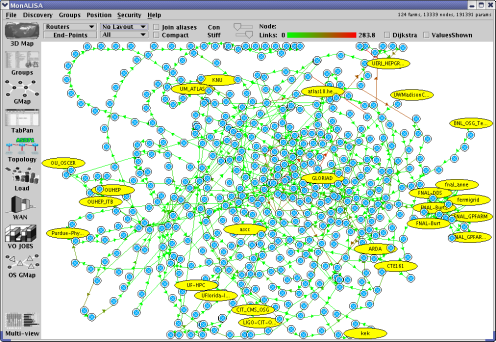
A global view of raw image of the network
as it is retrieved by traceroute/tracepath.
Each MonALISA service in executing a set of monitoring modules which are based on standard
tools (traceroute, tracepath, ping) to collect basic information on connectivity and hop delay.
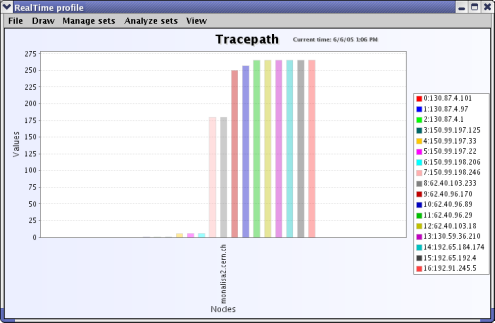
Realtime view of 16 hops trace
from Caltech-test.kek.jp to monalisa2.cern.ch
Then, this data is used by dedicated services, to get information like location, Autonomous System
number (AS), Network Name, a short description about the domain in which each hop resides and its
location.
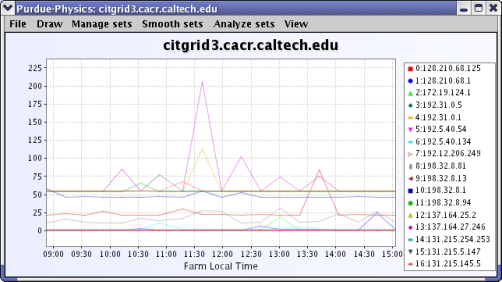
History of the trace between Purdue-Physics and citgrid2
with hops delays over the last 6 hours
Another specialized MonALISA service to determine whether two IPs are on the same device (router)
and serve this information to topology mapping clients or other services.
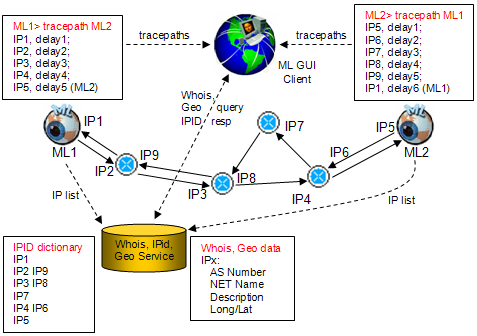
This service is dynamically building a dictionary with all the IPs identified by measurements performed by all
the monitoring services and is using several techniques to identify all the IPs which are on the same router.
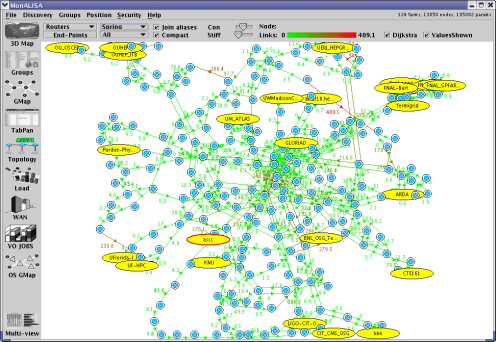
IPs belonging to the same router have been identified
Based on this data, complex algorithms can be developed to discover problems in the network interconnections
or for optimization purposes.
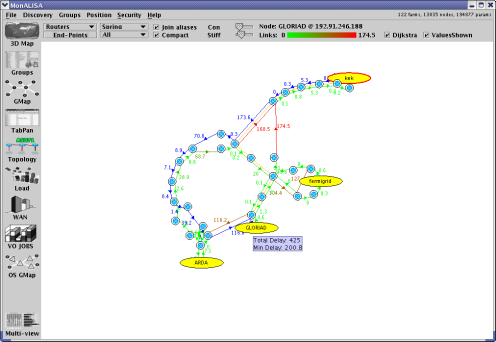
Actual distance and path together with minimum compputed distance and path
between two farms.
|



